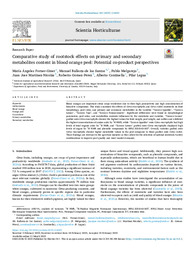Please use this identifier to cite or link to this item:
https://hdl.handle.net/11000/36675Full metadata record
| DC Field | Value | Language |
|---|---|---|
| dc.contributor.author | Forner-Giner, M. Angeles | - |
| dc.contributor.author | BALLESTA DE LOS SANTOS, MANUEL | - |
| dc.contributor.author | Melgarejo Moreno, Pablo | - |
| dc.contributor.author | Martinez Nicolas, Juan Jose | - |
| dc.contributor.author | Gómez-Pérez, Roberto | - |
| dc.contributor.author | Continella, Alberto | - |
| dc.contributor.author | Legua, Pilar | - |
| dc.contributor.other | Departamentos de la UMH::Producción Vegetal y Microbiología | es_ES |
| dc.date.accessioned | 2025-05-23T12:14:16Z | - |
| dc.date.available | 2025-05-23T12:14:16Z | - |
| dc.date.created | 2025-03-13 | - |
| dc.identifier.citation | Scientia Horticulturae Volume 342, 15 February 2025, 114042 | es_ES |
| dc.identifier.issn | 0304-4238 | - |
| dc.identifier.issn | 1879-1018 | - |
| dc.identifier.uri | https://hdl.handle.net/11000/36675 | - |
| dc.description.abstract | Blood oranges are important citrus crops worldwide due to their high productivity and high concentration of bioactive compounds. This study examined the effects of Citrus macrophylla and Citrus reshni rootstocks on fruit morphology, peel color, and primary and secondary metabolites in the varieties “Tarocco Ippolito”, “Tarocco Lemso”, “Tarocco Tapi”, and “Tarocco Fondaconuovo”. Significant differences were found in morphological parameters, peel color, and metabolites contents influenced by the rootstocks and varieties. “Tarocco Lemso” grafted onto Citrus macrophylla showed the highest values for fruit weight, peel weight, and caliber and exhibited the highest concentrations of amino acids by 1H NMR, while “Tarocco Ippolito” onto Citrus macrophylla had high levels of total organic acids by 1H NMR, and “Tarocco Lemso” grafted onto Citrus macrophylla displayed high levels of sugars by 1H NMR and phenolic compounds by HPLC-ESI-DAD-MSn. Overall, varieties grafted onto Citrus macrophylla showed higher metabolite values in the peel compared to those grafted onto Citrus reshni. These findings are relevant to the agri-food industry as they allow for the selection of optimal rootstock/variety combinations to improve peel quality and meet market demands | es_ES |
| dc.format | application/pdf | es_ES |
| dc.format.extent | 13 | es_ES |
| dc.language.iso | eng | es_ES |
| dc.publisher | Elsevier | es_ES |
| dc.rights | info:eu-repo/semantics/openAccess | es_ES |
| dc.rights.uri | http://creativecommons.org/licenses/by-nc-nd/4.0/ | * |
| dc.subject | Anthocyanins | es_ES |
| dc.subject | Blood orange | es_ES |
| dc.subject | Orange peel | es_ES |
| dc.subject | Co-products | es_ES |
| dc.subject | Primary metabolites | es_ES |
| dc.subject | Secondary metabolites | es_ES |
| dc.title | Comparative study of rootstock effects on primary and secondary metabolites content in blood orange peel: Potential co-product perspectives | es_ES |
| dc.type | info:eu-repo/semantics/article | es_ES |
| dc.relation.publisherversion | https://doi.org/10.1016/j.scienta.2025.114042 | es_ES |

View/Open:
Scientia Horticulturae-342-2025.pdf
4,48 MB
Adobe PDF
Share:
.png)
